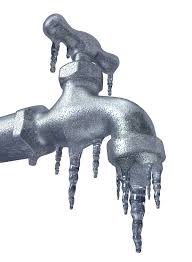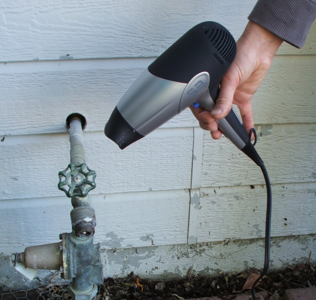What should I do if my pipes freeze?
If you turn on a faucet and get no water, your pipes may be frozen. If your pipes freeze, there are some procedures that you can follow to thaw them. The sooner the problem is recognized, the better chance that damage will be minimized. Some techniques for thawing frozen pipes include:
- If possible, expose a boxed-in area to the inside heat. An example includes opening some ceiling tiles if your home has a drop ceiling.
- Use a heat gun. However, be extremely careful as the heat from the heat gun will ignite any wood or paper it contacts.
- DO NOT use torches to thaw pipes!
- Rubbing the pipes with warm, damp rags may slowly thaw the line.
- If you do not have water for an extended period of time, special attention should be given to hot water heaters and boilers.
What should I do if a pipe breaks?
Shut off your water immediately, using your home’s shutoff valve.
 Where are my shutoff valves?
Where are my shutoff valves?
There are actually two major shutoff valves in line with your service. The first valve, called a curb stop, is generally located near the property line and is normally housed by a cylinder with a cap on it called the curb box. The other major valve is located in the home next to the water meter. Other valves may be near plumbing appliances such as sinks and toilets.
Keeping your main valve in good working condition will assure you that you will be able to turn your water off in the event of an emergency, in case one of your water pipes breaks, for example. Older style gate valves should be turned periodically due to possible corrosion build-up. Newer Teflon coated ball valves should stay in working order without any regular turning.
What if my main valve does not work in an emergency?
You should call your local Public Works Department so that someone can shut off your water.
Source: City of Keene, New Hampshire


